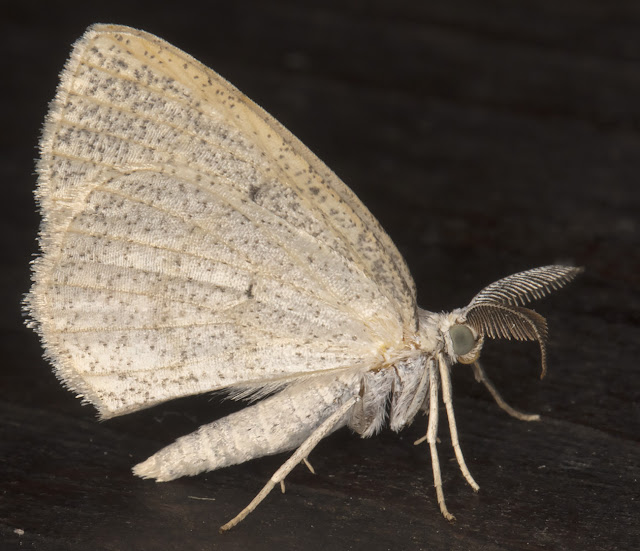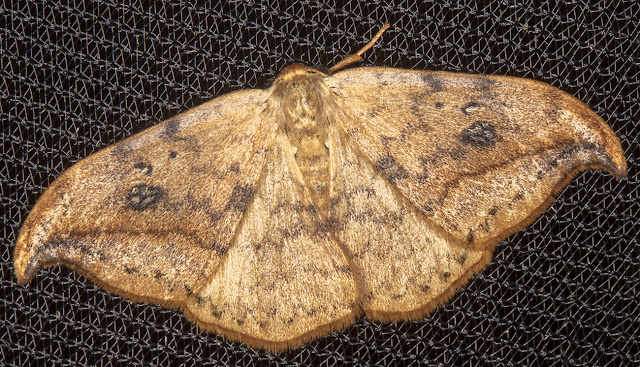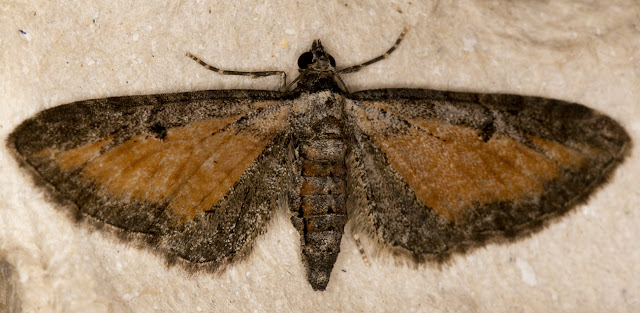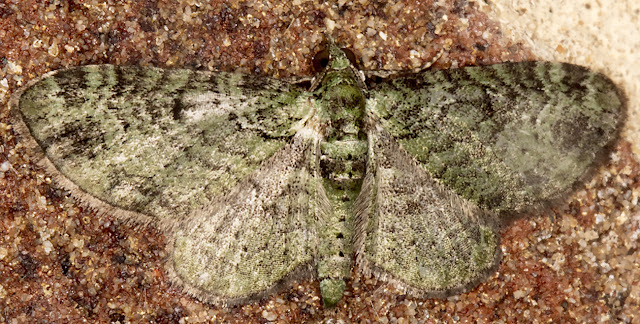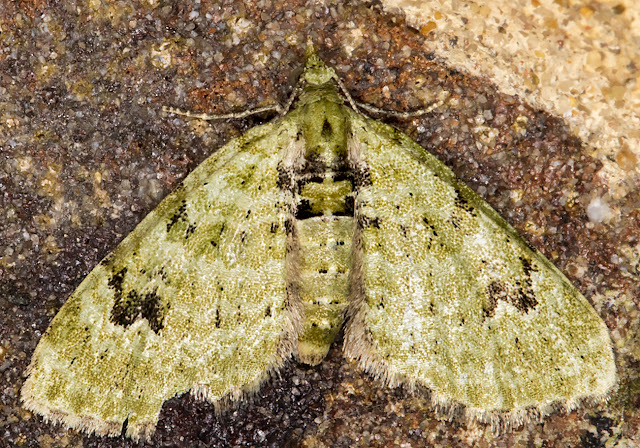 |
| Double-striped Pug, Gymnoscelis rufifasciata. Luxford Lane, Crowborough, 2 August 2017. |
Pugs are a group of small moths, most of them in the tribe Eupitheciini of the family Geometridae, that mostly look very similar to each other. When thinking of how to describe and identify them, the phrase "stare until your eyes drop out of your head" came to mind. Because mostly, the differences are very subtle, but can often be quite distinct if you can become aware of them.
This Double-striped Pug is one of the easiest, particularly when fresh. Though please note, it has many more than two stripes.
 |
| Foxglove Pug, Eupithecia pulchellata. Luxford Lane, Crowborough, 29 June 2017. |
In fact this Foxglove Pug is sometimes mistaken for it for that reason.
There's a saying that goes something like "If you hear hoofbeats, expect horses, not zebras." (A variation of Occam's Razor.) Well, that works fine if I am hearing "clip-clop" sounds from outside my house. But if I were on the Serengeti, I would have to re-cast that saying completely. Also, back to the world of moths, if you see only what you expect to see, you can miss some interesting rarities.
And since I moved house, I don't even know what I should expect to see. I have seen three pugs here that never turned up at Hayes.
 |
| Freyer's Pug, Eupithecia intricata subsp. arceuthata. Luxford Lane, Crowborough, 2 June 2017. |
Freyer's Pug, with elongated wing spots (many pugs have these) and rows of fine lines on the wings.
 |
| Haworth's Pug, Eupithecia haworthiata. Luxford Lane, Crowborough, 17 July 2017. |
Haworth's Pug, with an orange body.
 |
| Currant Pug, Eupithecia assimilata. Luxford Lane, Crowborough, 13 August 2017. |
And a Currant Pug, with much bigger dark wing spots and a more chestnut coloration than many pugs (and there are many pugs).
OK, those were easy, really. Here are some I have encountered over the last few years.
 |
| Common Pug, Eupithecia vulgata. Hayes, 1 June 2016. |
Common Pug. We are encouraged to learn this one because it is "easy" ...
 |
| Mottled Pug, Eupithecia exiguata. Hayes, 28 May 2012. |
Mottled Pug. I find this hard to distinguish from the next one:
 |
| Brindled Pug, Eupithecia abbreviata. Hayes, 25 May 2012. |
The Brindled Pug. I really hope I ave those last three right, because I am not very confident in identifying them, so if anyone thinks I am mistaken, please say.
At this point I will just add in this one:
 |
| Unidentified melanic pug, Eupithecia species. Hayes on 5 August 2012. |
Some species have melanic forms, dark-winged with no identifying features, though the wing outline gives a clue in some cases. Most of these need to be dissected for a proper identification.
Next time: more pugs, all of them easier to identify than those last four.
